Median Care
Health care
An at-Home self-monitoring tool for infectious disease symptoms
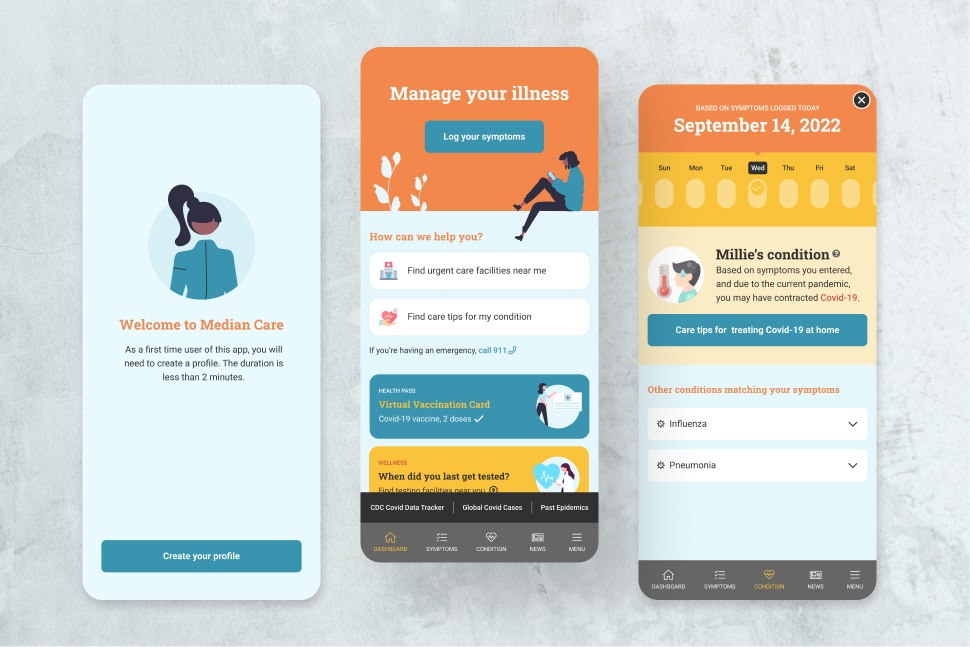
ROLE: UX Research, UX Design, UI Design
METHODS: Foundational research, Market landscape analysis, Surveys, In-Depth Interviews, Task Analysis, Data Synthesis, LoFi Wireframe Creation, Prototyping, HiFi Mockup Design, Brand design, Validation
TOOLS: Figjam, Figma, Google forms for survey, User Bob for interviews
TEAM: Solo
Business problem & context
During the COVID-19 pandemic, patients with infectious diseases often faced a critical gap in care: despite being told to self-monitor symptoms at home, they lacked proper tools to track their condition, determine symptom severity, or access reliable information. With approximately 7.2 million infection-related doctor visits annually in the US alone, this represented a significant unmet need in healthcare that affected patient outcomes and increased anxiety during recovery.
My role & leadership
As the sole researcher and designer on this project, I led the entire process from identifying the market opportunity to designing and validating the solution. My personal experience of managing moderate to severe COVID-19 symptoms for 8 weeks provided unique insight, but I ensured all decisions were backed by comprehensive user research across diverse patient experiences.
Strategic approach
I approached this challenge using the Double Diamond innovation framework to ensure the solution met the trifecta of desirability, feasibility, and viability:
- Discovery: Conducted market landscape analysis that revealed no existing tools focused specifically on tracking/monitoring patient symptoms over time—identifying a clear opportunity space
- Definition: Synthesized research findings into clear user needs and problem statement:
- Development: Prioritized features based on value/complexity analysis and created an intuitive digital solution
- Delivery: Validated the concept through rigorous user testing
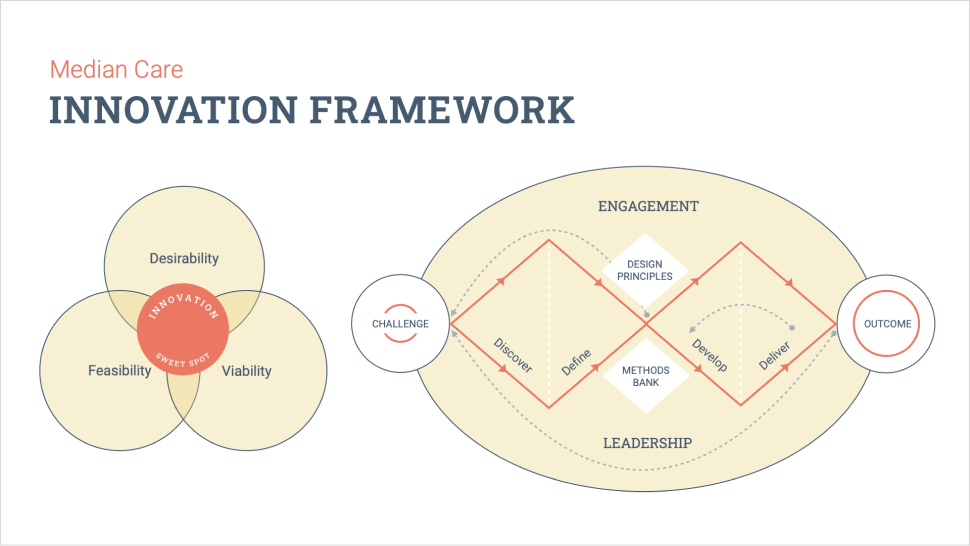
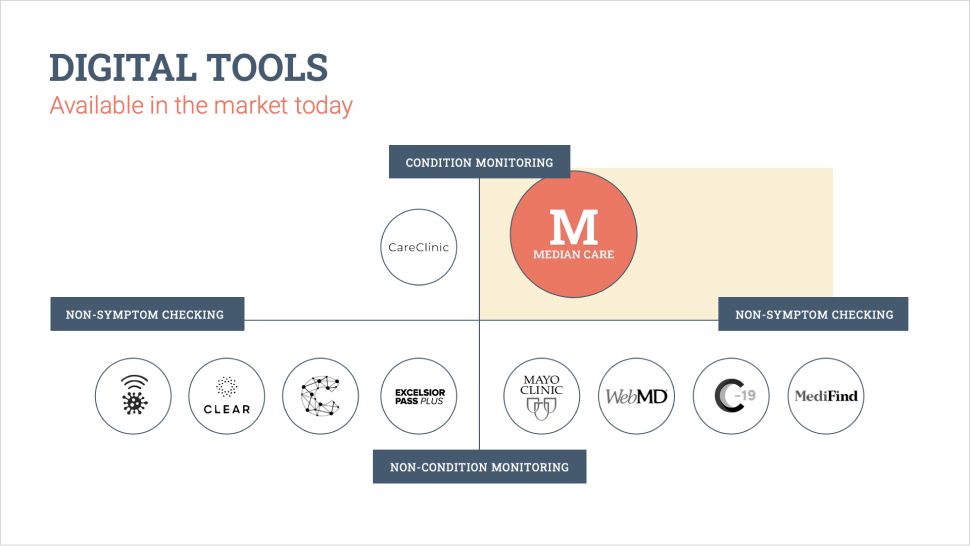
Problem statement
How might we utilize cutting-edge technology to support infectious disease patients in their home recovery journey?Key research insights
Through surveys and in-depth interviews, I uncovered several critical insights:
- Patients frequently misunderstood symptom severity (rating delirium as "moderate" at 3/5)
- Most avoided seeking medical care despite experiencing serious symptoms due to hospital surge or confusion about when care was needed
- Inconsistent media coverage created additional fear and anxiety during isolation
- All participants were open to digital monitoring tools but none knew any existed
These findings led to the identification of four primary user needs:
- Access to reliable information
- Guidance on when to seek care
- Understanding of symptoms and condition
- Ability to track recovery progress
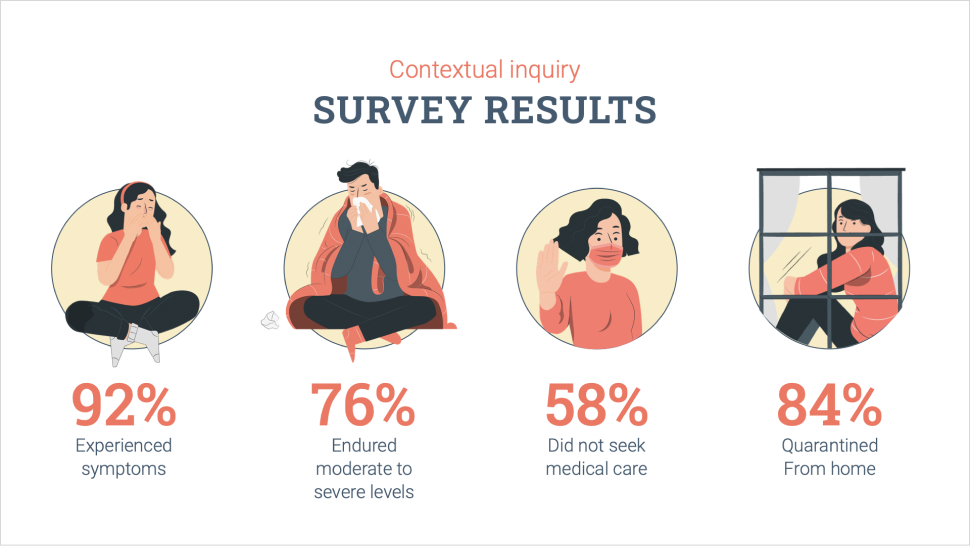
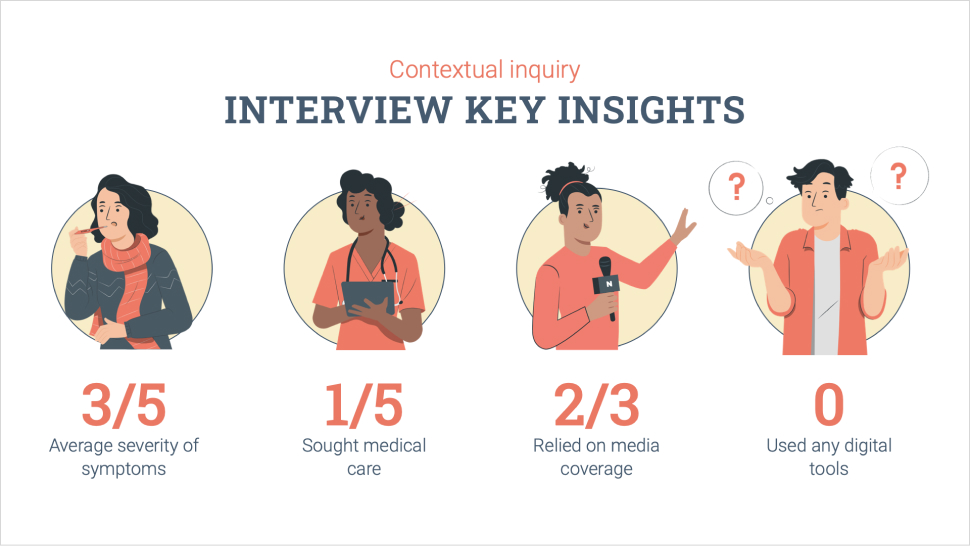
Key design decisions
Based on research insights and competitive analysis, I made several strategic decisions:
- Calendar-Based Symptom Logging: Created a simple system for patients to track multiple symptoms over time to visualize their recovery journey
- Severity Assessment Tools: Implemented objective measurements (temperature, oxygen levels) rather than subjective assessments
- Curated Information: Designed a system to deliver verified health information from reputable sources
- Healthcare Connection: Included direct pathways to testing facilities and medical care when symptoms reached concerning thresholds
I prioritized features based on a feasibility/value matrix, focusing on high-value, medium-complexity solutions that could be implemented effectively.
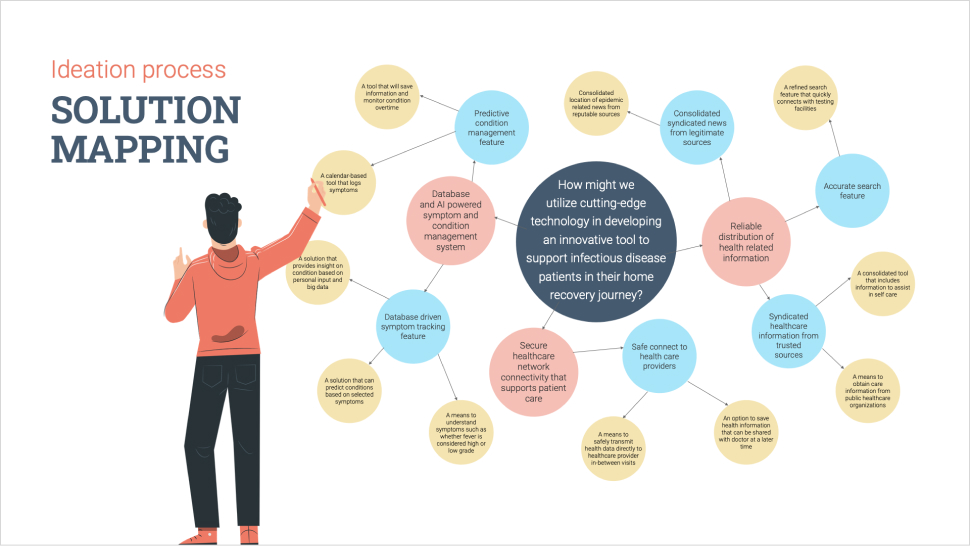
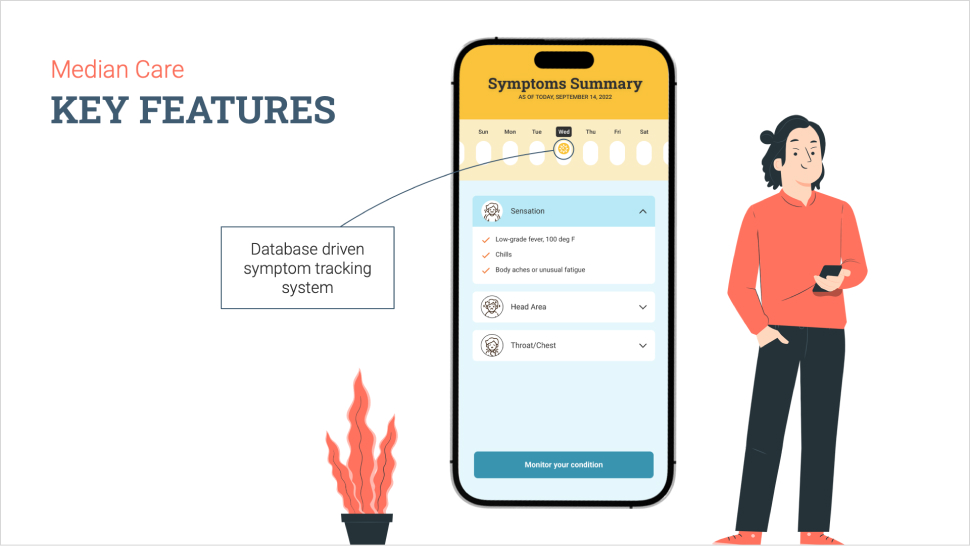
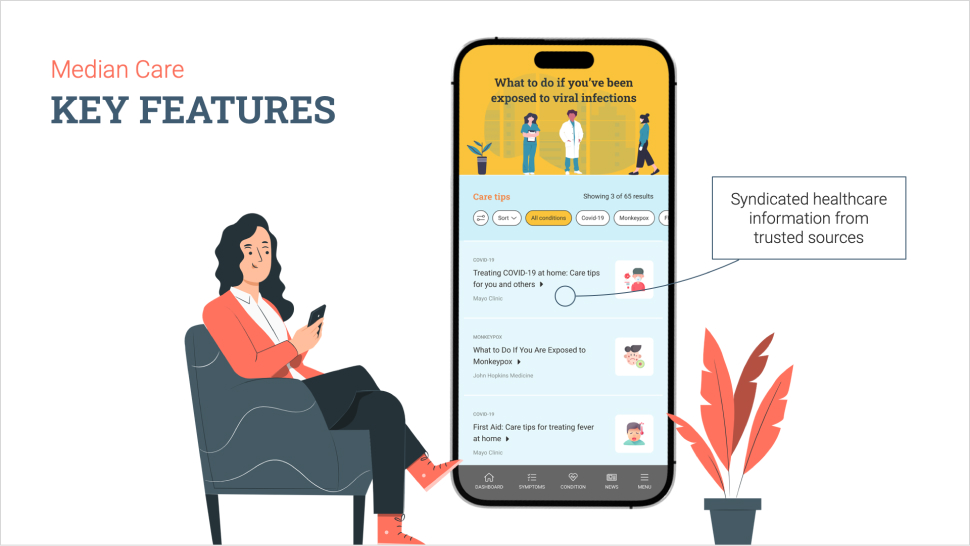
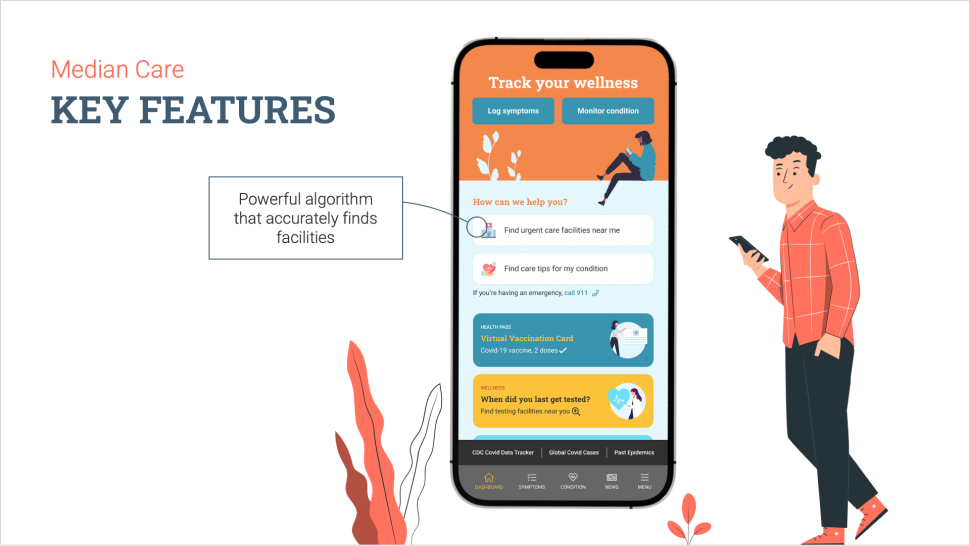
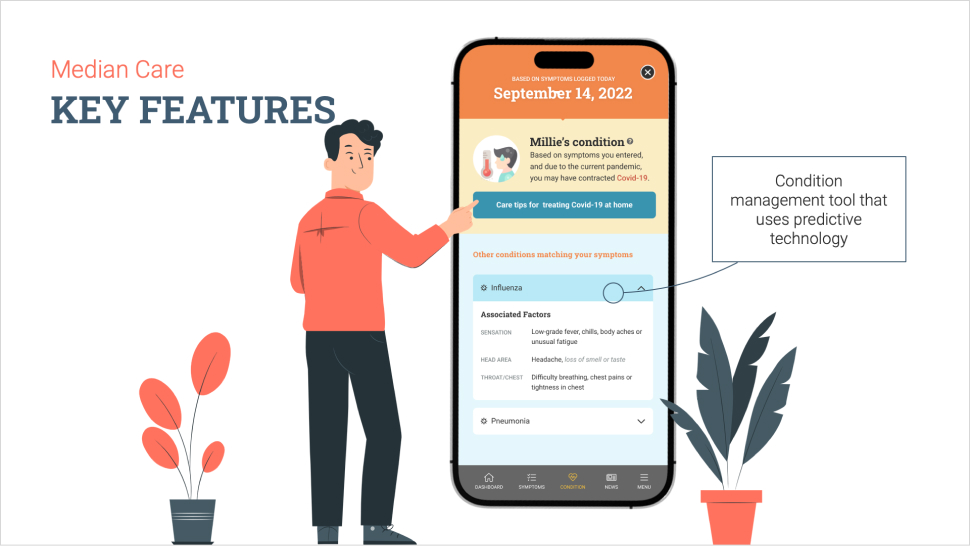

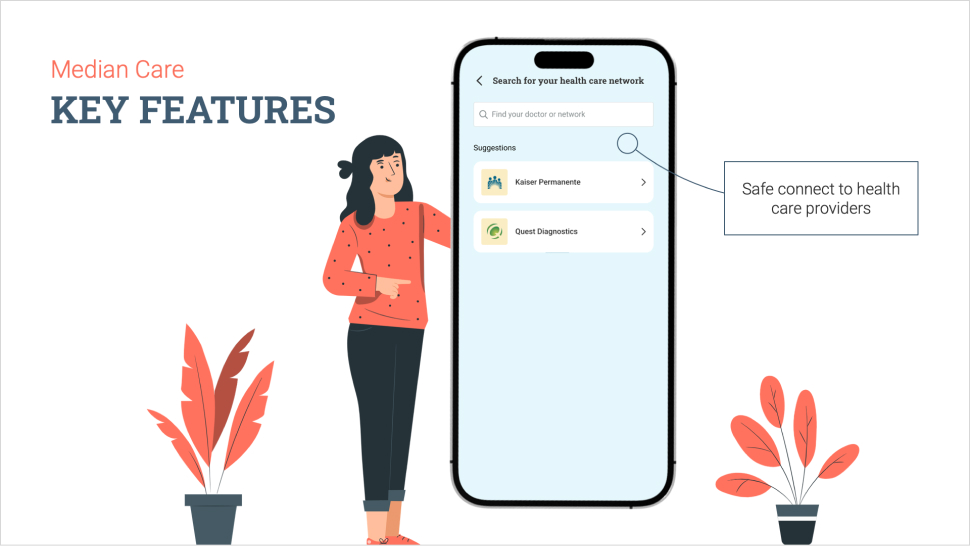
Results & business impact
Validation testing with 5 participants demonstrated the solution's effectiveness:
- 100% task completion rate for core symptom logging and monitoring features
- 80% engagement with the "Urgent Care" call-to-action, indicating increased willingness to seek appropriate medical care
- All participants stated they would use the app in the future
The solution demonstrated potential for significant healthcare impact by:
- Improving patient understanding of symptom severity
- Increasing appropriate medical care-seeking behavior
- Reducing anxiety through reliable information
- Supporting recovery through targeted self-care guidance